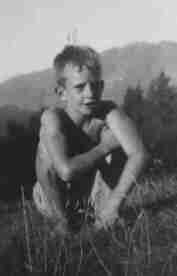I wrote about the 125th Anniversary of Parihaka. Our week-long trip to the 'Naki was not connected in any way until I wrote that.
So, I took with me a small collection of J.C. Sturm's poetry, including her two poems on Parihaka, with the intent of reading them at the site of Parihaka itself.
Now, the first difficulty is finding the site of the original settlements. There is nothing on any of the maps that we were carrying - there is a map here that will help. There are descriptive locations in many of the various writings. They make reference to Bell Block, to a nearby military outpost, to Pungarehu, Pukearuhe both of which you will see are a fair distance apart.
I thought that a visit to Puke Ariki (source of the map, and an excellent museum and aftgernoon's wander) might have helped solve the immediate problem of "Where...?" We found a couple of the old survey pegs in a case. We found detailed description of the Taranaki Wars through the 1850's. The nearest that we got to Parihaka though was the Declaration of Martial Law by Govenor Gore-Brown in 1860; the proclamation that was repealed 24 hours later. That Declaration was the beginning (20 years prior to) the end of the story at Parihaka. It was the show of power and intent that I believe was a strong motivator for Te Whiti and Tohu Kakahi in their promotion of Maori economic independence, if not political and national independence. To be fair to Puke Ariki, their web-site summary of the story does some justice to the man, if not the events.
There was a second reference in the Maori History section of the Museum, including a brief description of the actions of Te Whiti, the responses of the militias, and of the debt owed to Ngai Tahu for their care of the men who were taken into slavery in the South Island, and the women who followed them there.
We did not find the AA sign. It apparently does exist.
We did visit Pukeiti, and the rhododendron gardens there. The place is important to the story, the rhodos coincidental. Or are they? The original land allocations of the area around Pukeiti could well date from the time of the 1860 confiscations.
All in all, it is a fascinating piece of NZ history. It is a critical illustration of the methods used in building the colony. The actions of the colonial administration differed little from those used in the Waikato in the 1850s and 60s, the Bay of Plenty and Tauranga area about the same time, or for that matter the battles between settlers and British forces on the one hand and the Ngapuhi on the other around Bay of Islands and Hokianga in the 1830s; the battles that led to the signing of the Treaty of Waitangi.
There was a man - JC Sturm
There was a man
preached peace
to warrior chiefs.
He built a pa
at Parihaka.
Soldiers burned it down
robbed the people
of their land
and livelihood.
He preached
to them as well.
They would not listen.
Or history
would be different
if they had.
How much longer
must we reap
their bitter harvest?
_______________________________________
Kia ora JC Sturm. Kia Ora, kia mana, kia mana.
From my heart, thank you.
Sunday, November 26, 2006
Subscribe to:
Post Comments (Atom)

No comments:
Post a Comment